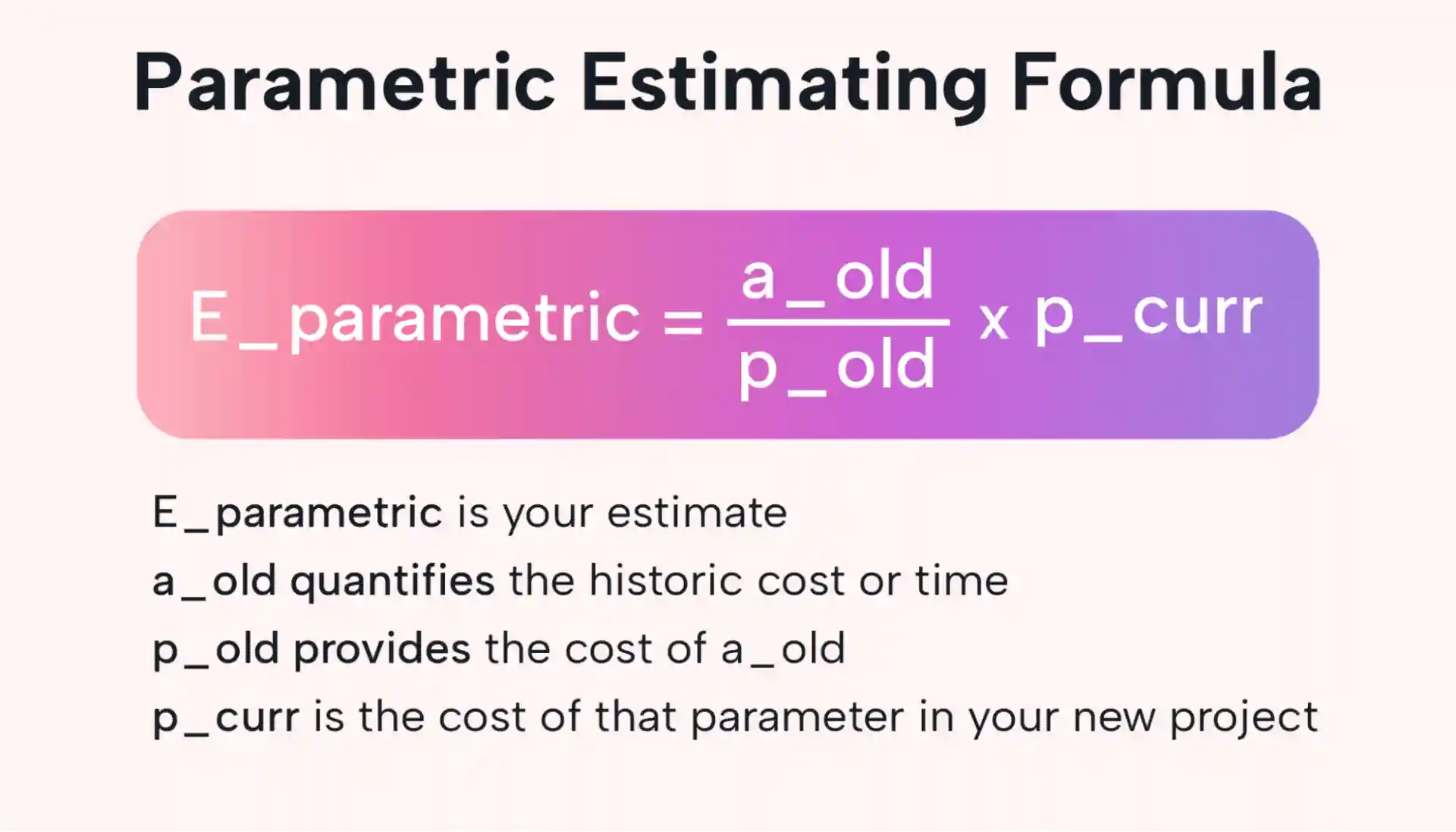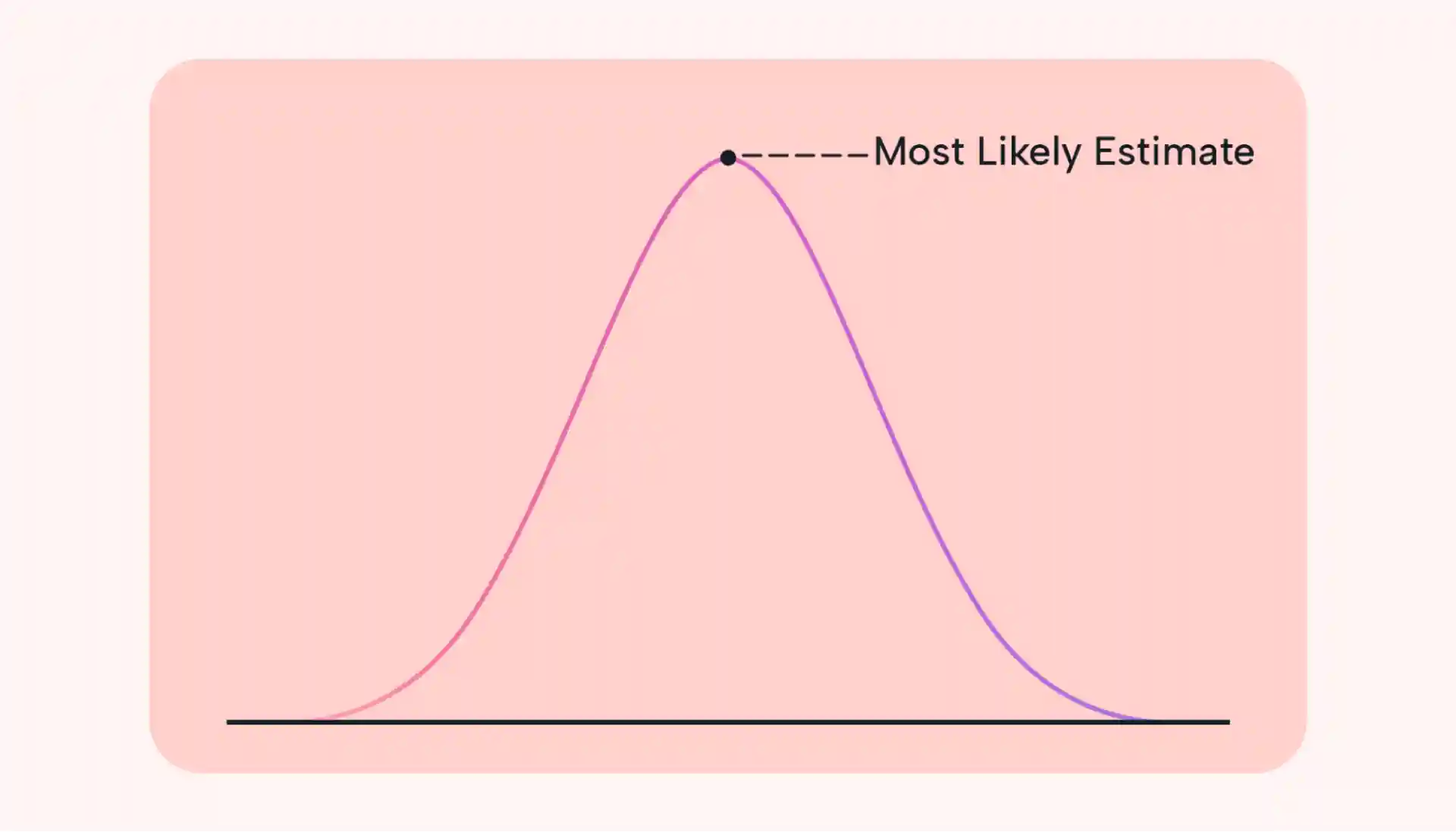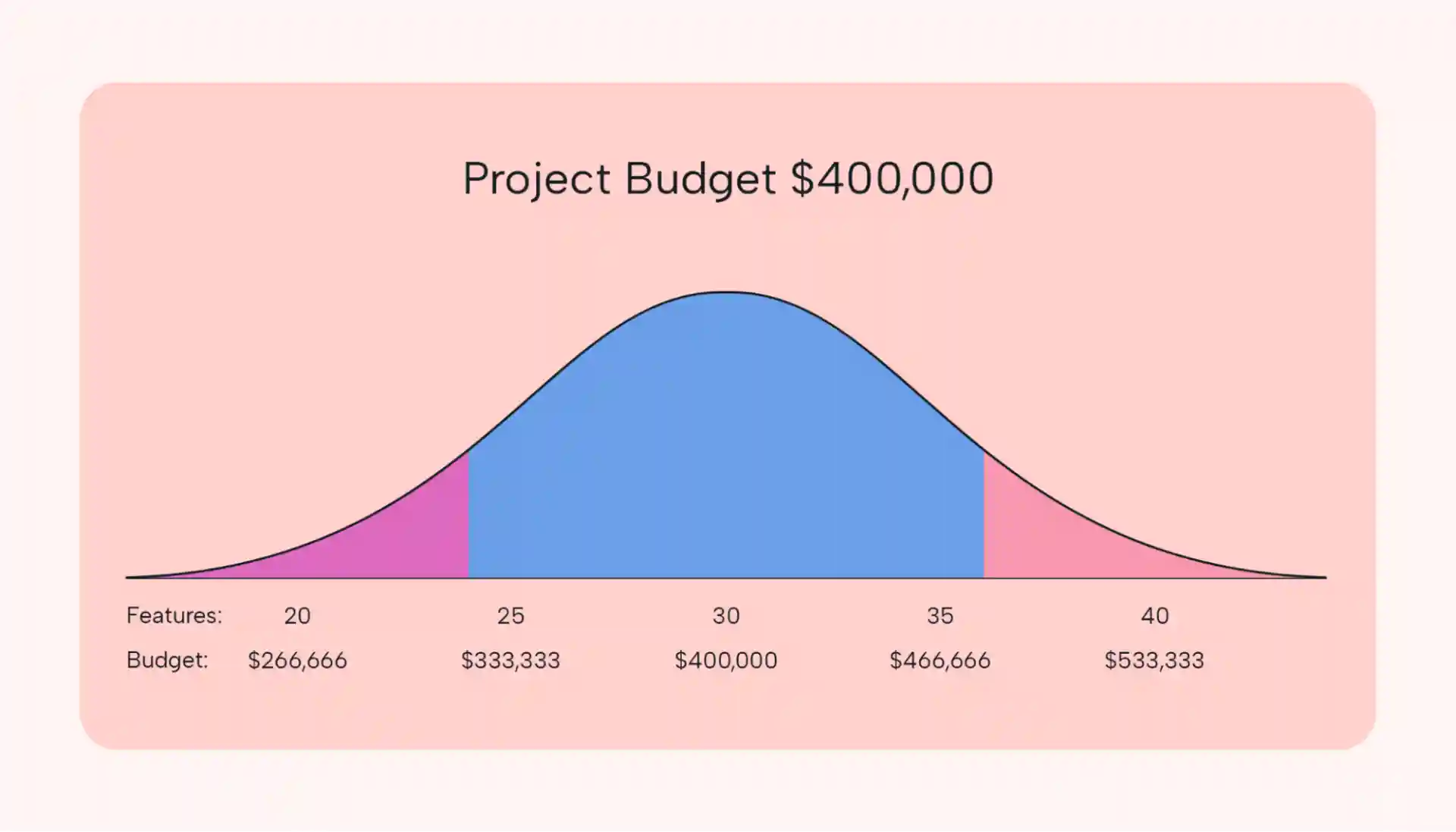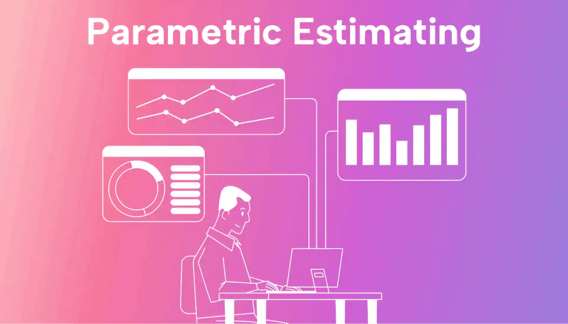The big challenge for project managers is bringing in a project on time and within budget. It’s a leading cause of stress in the profession. Ironically, it can all be avoided or, at the very least, minimized.
But it’s tricky. Project deadlines and budget constraints are often dictated from above. Inputs from the project team are glossed over, and a message is sent: Just get it done. Experienced project managers will take that under advisement. They’ll do estimates to work out the cost and timeline for themselves before they commit to any imposed budget and schedule.
And they often turn to parametric estimating. It’s a method that uses historical data to estimate the cost, time, or resources needed for a project. In this article, you’ll discover how it uses statistical analysis and mathematical models to provide accurate estimates.
When can you use parametric estimating?
There’s no doubt that parametric estimating (done properly) is accurate, but there are several things you’ll need to have available if you’re going to use it. These are:
- You must have access to historical data from previous projects
- The project parameters you want to estimate must be quantifiable
- The project should be similar enough to past projects.
And even if you have all three, there may be better techniques to use on your project than parametric estimating. In that case, or if you lack one of the prerequisites, consider a different project estimation technique.
Why would you use parametric estimating?
Two words: it’s quick, and it’s accurate. The technique lets you estimate the cost, time, and resources you’ll need for your project. It’s quick because you’re using historical data, and it gives you an accurate estimate using a statistical technique called comprehensive regression analysis.
What that does is investigate relationships between your variables to find patterns and trends. It helps you to identify the things that influence your projects’ cost and time. And it lets you evolve predictive models that better estimate those factors on new projects.
Also, the more you use it, the more data you have and the more accurate your estimates will be.
A formula for success
The thing to grasp about parametric estimating is that, yes, there’s a formula. For small projects, all you need is the rule-of-three formula because it’s not too difficult to apply it task by task. Bear in mind that accurate results rely on providing quantifiable variables for 80% of your project’s tasks.
 |
That can be exhausting and way too much for larger, more complex projects. That’s where we turn to comprehensive regression analysis. Building complex statistical algorithms or mathematical models that work with your parameters is possible. But there are no shortcuts: You’ll need someone on your team with a solid grasp of mathematics.
Pros and cons
The parametric estimating technique is quite unique because its five main characteristics can all be seen in a positive or negative light. For example, using historical data gives you a high level of accuracy. It helps you to fine-tune your model and reduce errors.
At the same time, your results can be misleading if you don't have enough historical data or if the data that you have isn't that relevant. To deal with this, you should always make sure that your historical data is consistent with the scope and nature of your project.
Parametric estimation is also highly efficient. It can produce new estimates for you very quickly. But you need to have laid the groundwork by setting up the model correctly in the first place. Taking shortcuts in the setup can compromise your accuracy.
The technique is also highly scalable if you use data from projects of a similar nature. But the flip side is that it's not really going to be appropriate for one-off projects. It can also be very cost-effective because of its accuracy, but only if you invest the time and effort to collect all the right data.
Finally, parametric estimating can help you identify potential pitfalls early on. That'll be very helpful for risk management. But, you might rely too heavily on data. And then you could fall into the trap of not giving enough weight to human factors and intangibles. The data can't warn you about low team morale or creativity or predict market volatility.
Analogous estimating vs. parametric estimating
The two techniques are similar only in as far as they both rely on historical data. In analogous estimating, you draw data from comparable past projects to guide your estimates of duration, cost, and resources needed for your new project. The key is they must be similar projects, but the approach works with less data and at a higher level.
 |
With parametric estimating, you go far beyond that. You’ll use algorithms and quantitative parameters to work out the differences between new and old projects. But it's a technique that needs a lot more data to make its unit-wise calculations of cost, duration, and other variables.
What are the types of parametric estimating?
The most useful thing about parametric estimating is that it's scalable. Also, depending on the approach you take, you can calculate estimates with a different level of detail. One approach will give you a single estimate per data point. Another method offers a range of estimates for each data point, along with your probability of achieving it.
Deterministic estimates
Let’s say you’re in the business of building residential properties, and you need an estimate of how much it’ll cost to build a complex with 20 houses. You’d begin by looking back at your past projects.
You’d have built houses or complexes before, so you’d pull data from those projects. First, you’d add up the cost of labor and materials for each project. Then, you’d identify the total floor space delivered in each. And finally, you’d divide the costs by the floor space to get a cost per square foot.
That’ll give you a single number that you can now use to provide a total cost estimate for your new project.
Probabilistic estimates
Deterministic estimates don’t offer any sense of risk, variation, or uncertainty. If you tell your project’s stakeholders the budget should be $400,000, they have no idea what variation to expect when the rubber hits the road. The final cost could be $500,000? Or $600,000? Or more.
But giving them a probabilistic estimate changes that. If you tell your stakeholders your project cost will be $200,000-$600,000, but likely around $400,000, you provide the missing info. You’re telling them how uncertain you are about the project’s actual cost and providing an indication of what you think is most probable ($400,000).
 |
You could present it in a chart similar to the one below. By using a bell-curve chart, you give your stakeholders a clear indication of how risky their project funding decisions might be.
Other methods
Deterministic and probabilistic estimating are the most common methods of doing estimations using parameters. Other methods can also be applied:
- Absolute estimates are where you assign a specific amount of time, effort, or cost to each task in your project.
- Relative estimates are expressed as comparisons to other, previous estimates.
- Flow-based estimating involves figuring out the cycle time for a process and throughput in terms of the number of items that are completed in a cycle.
How to do parametric estimating
The steps for all parametric estimations are quite similar. You’ll usually find differences in project size, the availability of well-developed data, and project complexity. And like other estimating methods, you must go through a process. The Project Management Institute has outlined five clear steps to follow.
Step 1: Identify your project parameters
Your first task is to figure out which aspects of the project you can use for parametric estimating. You must consider the specific details of your project and answer several questions about it.
- How accurate do your estimates have to be? Can your results provide a rough estimate, or must it be more definitive?
- Is there a connection between the parameters you’re considering and the project cost or duration?
- Is the data you need for a parametric estimation available to you? And where can you get it?
It can be useful for you to use your Work Breakdown Structure to help define the scope of your parametric estimate.
Step 2: Gather your historical data
This method of estimation uses a statistical model for its calculations, so you need to collect all the historical data you can lay your hands on. You can use data from previous projects that you’ll find in a variety of places. For example:
- Cost and duration data observed in projects the organization previously completed, preferably somewhat similar to your current project
- Benchmark data that are publicly available from other organizations and industries.
Step 3: Test parameters for correlation
Once you have collected the data, you’ll need to determine which of the parameters you’ve found will correlate with your project's cost or duration expectations.
 |
How you test the parameters is usually with statistical analysis or expert judgment — your own or that of a senior project team member. The size and complexity of your project will guide you.
Step 4: Confirm validity of your parameters
Having established what parameters to use, you need to confirm that they are drivers of either cost or time on your project. You may use statistical methods through a spreadsheet model, or you could choose to use an online software tool.
By checking the correlation with a regression analysis, you’re making certain that you’ve chosen the appropriate parameters for your project's estimation model.
Step 5: Calculate
It’s at this point that you begin your deterministic or probabilistic estimates. For a relatively simple or smallish project, you’d begin with your cost or time estimates per parameter unit. It’s also where the formula mentioned earlier comes in:
- E_parametric = a_old/p_old x p_curr
- Where:
- E_parametric is your parametric estimate;
- a_old is the historical cost or time;
- p_old is the historical value of the parameter, and;
- p_curr is the value of the parameter in your current project.
This formula helps you to establish the statistical relationship between your historical data and the other variables, which allows you to work out your estimates.
More examples of parametric estimation
Example 1: Deterministic
Imagine you’re running a software development company, and a client approaches you to develop a new app for them. Because you’ve done this before, you’ve plenty of historical data to draw on. And digging into it, you find that:
- On average, building a new app costs you $400,000 and takes your developers about six months to complete.
- Your data also reveals to you that the number of features in the new app is a key factor influencing cost and duration. And looking at the apps your team previously developed, the number of features ranged from 10-50, with an average of 30.
Using the formula above and working on the client’s request for 40 features, you can estimate the cost and duration of the new app. This is how you do it:
- E_parametric = a_old/p_old x p_curr
- E_parametric = $400,000/30 features x 40 features = $533,333
Example 2: Probabilistic
On a different project, our client approaches you with a budget of $500,000 and wants his app developed. But it’s not clear how many features will be needed. You can provide a range of prices based on a varying number of features so that an informed decision can be made.
You can also provide your client with a chart that visibly demonstrates the likely cost of fewer or more features. We can also incorporate uncertainty into the model by showing a high probability that the $400,000/30 project budget will be sufficient. Using a chart like this allows stakeholders to quickly see the risk associated with their project funding decisions.
 |
Other kinds of probabilistic estimating with parameters can show the likelihood of achieving various durations (or better) using statistical probability models such as a PERT triangular distribution. The same can be done for costs.
How Motion helps you with your parametric estimation
Project cost, duration, and resource planning require lots of time and preparation, even when only dealing with a small project. And the complexity only increases as your project gets bigger and bigger. Using an estimating technique to help you in that process is not only sensible, but you’d probably be foolish not to.
However, before making any of your estimates, determine your project scope and how similar it is to what you’ve built previously. Use that to complete your parametric estimates. You can then provide those resources and time estimates to Motion and create the tasks and resource assignments. Your parametric estimates will guide you in this, which indicates how much time each task will need, when, and by whom.
When you’ve captured your non-project work, projects, tasks, resources, available work time, dependencies, priorities, and deadlines, Motion’s AI will optimize your team’s schedules. And it will automatically reprioritize tasks when priorities change, or new ones emerge.
The best part is that there’s a 7-day free trial to try it before you buy it.

After 40-odd years of working in technology, project management, media, and marketing, Brian's career and growth journey has exposed him to a wide range of niches. He brings this breadth of knowledge and expertise in his content work through enriched storytelling and original concepts that make SaaS content engaging and accessible for readers of all stripes.




